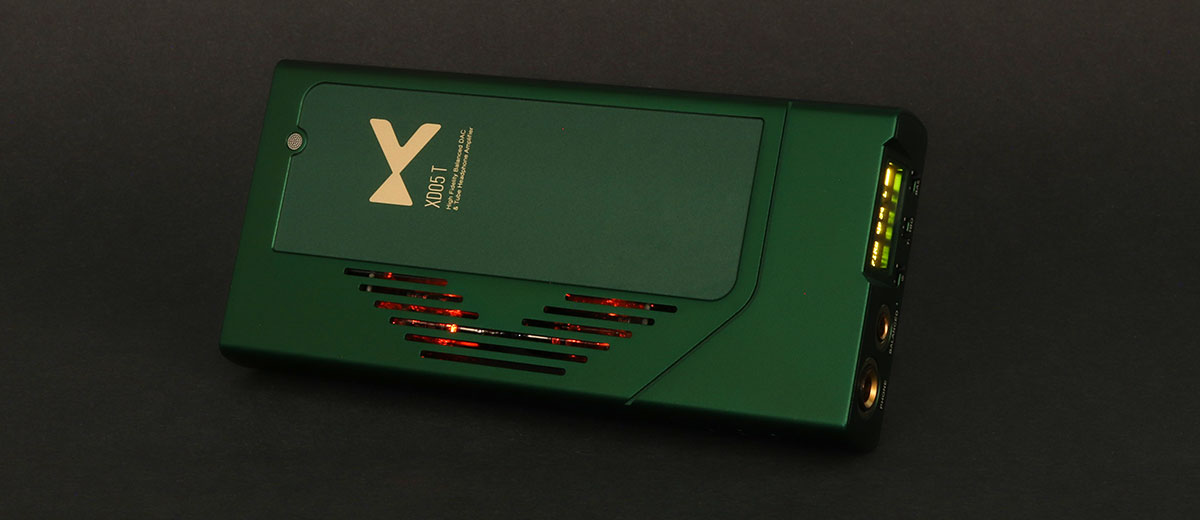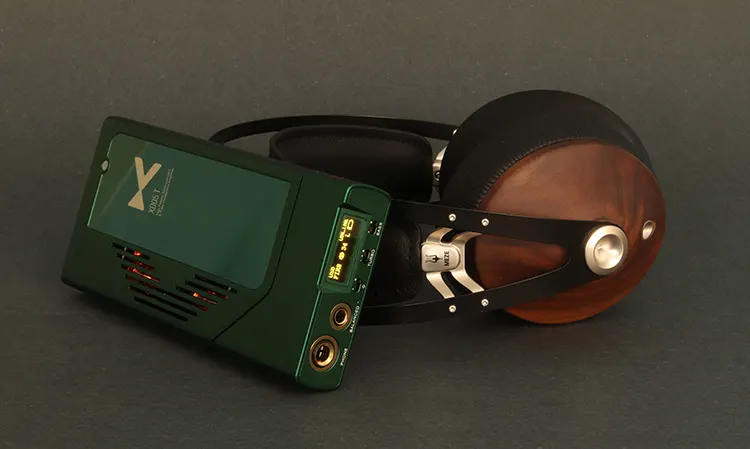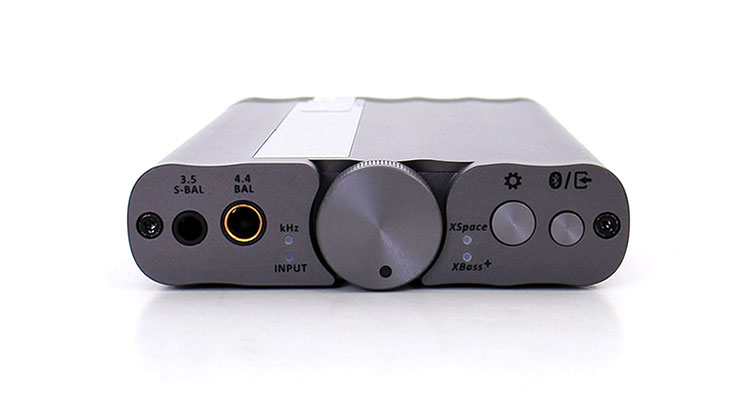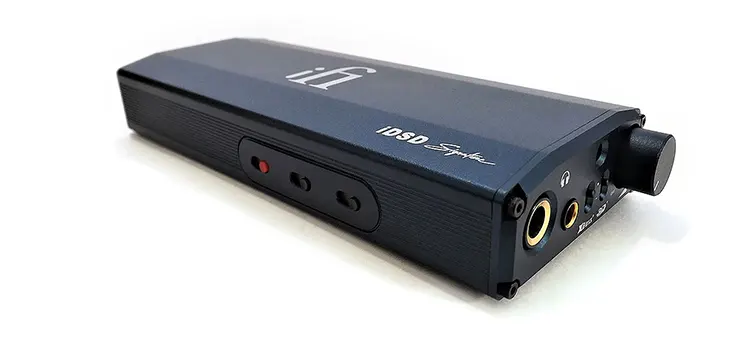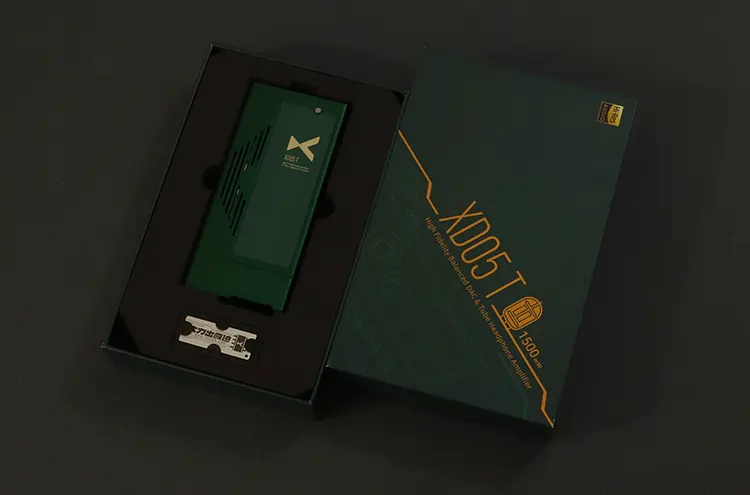Synergy
Power
The xDuoo XD05T wields its driving power effortlessly and with authority for such a small device. It’s capable of pushing a wide spectrum of headphones with good control and muscle.
Its high output delivers a commanding grip on demanding planar magnetics, allowing them to reveal their full potential without strain or compromise. I can push a pair of HIFIMAN Arya V2 very well, which are not easy to drive, for example.
The xDuoo XD05T exhibits a delicacy that caters to sensitive in-ear monitors on the lowest turbo setting, avoiding any hint of hiss or overpowering the IEM.
It seems well-controlled even on the highest levels of the turbo setting. You can also attribute this characteristic to the 99-step volume.
Pairing
The xDuoo XD05T’s versatility makes it an ideal pairing with a wide range of headphones and in-ear monitors, but certain combinations could unlock its potential and showcase its strengths.
If you ever wanted to pair a set like the Sundara open-backs or any Planar with a tube amplifier the xDuoo XD05T will fit the bill. Cans like the MEZE 99 Classics took me back to a time when warmth, texture, and velvet tones were prominent.
The XD05T’s magic lies in its ability to adapt to the personality of your gear while adding a touch of its character. It’s a well-oiled machine for listeners who appreciate both technical brilliance and character with a spoonful of musicality.
Even a headphone like the HIFIMAN Ananda Nano combined with the XD05T produces remarkable results combining the speedy prowess of the Nano with the smoothness and warmth of the XD05T, giving the Nanos a sense of lushness that veers them away from sounding too sterile.
iFi audio xDSD Gryphon
Technical
The iFi Audio xDSD Gryphon and the xDuoo XD05T are both portable DAC/amps that cater to audiophiles, yet they differ in design philosophy, sound signature, and user experience. Both models are certainly capable of producing top-notch sound quality.
These two units are the antithesis to each other in some ways although they share many similarities. The xDSD Gryphon is also an AIO that sports IO ports on the rear of the unit similar to the XD05T’s IO section is similar.
The xDSD Gryphon relies on iFi audio’s tried and true formula consisting of custom Burr-Brown DACs, an XMOS USB section, a QCC5100 Bluetooth section, and their XBass, XSpace implementation which I think is one of the best bass boost features around due to its subtlety and effectiveness in both bass response and staging.
Design
The iFi Audio xDSD Gryphon is smaller even though it packs in as many features as the XD05T which is considerably larger. The Gryphon also sports a larger display that allows the user to visually tap into all the hidden features.
Each model has a similar headphone out section but the Gryphon swaps the 6.35mm for a 3.5mm connector. A multi-function volume knob sits dead center of the front panel.
One aspect that the xDSD Gryphon wins hands down is battery charging time which takes a long time on the XD05T, too long. But the amount of extra playtime one can obtain from the XD05T counterbalances that.
Performance
If you compare power output alone, the obvious winner will be the XD05T. The amount of power that the XD05T has is undeniably more abundant.
Although the XD05T is sold as a warm-sounding device, believe it or not, I find the Gryphon to be the warmest of the two because the highs tend to be restrained and slightly rolled off. The XD05T produces sharper highs.
The xDSD Gryphon also portrays the bass with a full-bodied response, particularly if you use the Xbass feature. Contrary, the XD05T bass seems punchier, well extended, and delivers clean precision in the low end.
The xDSD Gryphon excels in microdetails and macro-dynamics and with the Xspace engaged it can portray a wider panorama. But the XD05T comes through with a focus on transient response and it excels at fast, complex, and busy tracks.
iFi audio iDSD Signature
Technical
The iFi audio iDSD Signature is one of my favorite devices from iFi but it seems they have removed it from their website although you can still purchase them at certain big box mail-order retail stores.
It’s a model that combines all the iFi features into a similarly sized chassis. The Xbass and Xspace can be selected from the front panel, the analog volume knob, which is sonically superior to digital variants, Power mode, and IEMatch, plus a few digital filters.
Power output is at an outrageous 4100mW max and a continuous 1000mW on the 4.4mm tap. Similarly, the other headphone output tap is also a 6.35mm.
Design
Both these models have similarly designed body styles but the iDSD Signature is just a tad larger, and although larger, it offers fewer IO ports. The iDSD Signature is heavier as well.
One of the aspects I didn’t concur with on the iDSD Signature was the finish which can get scuffed and scratched easily. I’m not sure but it seems that the finish is painted on, rather than done through an anodizing process.
Being the larger unit, one would assume it had a larger battery but that doesn’t seem to be the case here. On top of that the XD05T’s battery might take longer to charge, but it gives the user more playtime per charge.
Performance
If you’re looking for neutrality, the XD05T is the more neutral and has the more detailed signature of the two. It excels in focus, precision, and clarity. However, the iDSD Signature excels in soundstage depth and layering.
The iFi iDSD Signature takes the lead if you compare power output alone and it’s by a large margin. The Signature excels at driving headphones that demand power.
However, that power output is a tradeoff for reduced battery life, and in a portable scenario, that can tilt the scale. In short words, the XD05T hits a middle spot in that it doesn’t supply as much driving power but it manages to supply extended battery life.
My Verdict
The xDuoo XD05T is a powerful and versatile portable DAC/amp combo device with Bluetooth capability that offers a slightly warm, dynamic sound signature with a well-balanced tonal profile.
It also provides enough grunt to drive demanding headphones, including planar magnetic cans while simultaneously having the delicacy to drive IEMs properly.
The xDuoo XD05T fits best in a home desktop scenario and those vents merit caution in an outside environment. That’s my only heed.
Other than that, the xDuoo is a good choice for anyone who wants a taste of hybrid sound in a compact chassis, with Bluetooth reception, excellent battery life, and sweet sonics.
xDuoo XD05T Technical Specifications
- DAC chip: ESS ES9039Q2M x2
- USB chip: XMOS XU316
- USB support format: PCM 16-32bit/ 44.1k-768kHz, DSD64-512, MQA1-8x
- Bluetooth chip: QCC5125, Bluetooth 5.1
- Bluetooth formats: SBC, AAC, aptX, aptX LL, aptX HD, LDAC
- Unbalanced power output: 750mW @32Ω, 83mW @ 300Ω (THD+N≤5%)
- Balanced power output: 1500mW @32Ω, 565mW @ 300Ω (THD+N≤5%)
- Output impedance: ≤2Ω
- Peak voltage: SE 15Vp-p, BAL 26VVp-p
- Frequency response: SE 20 to 20kHz, BAL 20 to 60kHz
- Crosstalk: SE ≥75db, BAL ≥105
- THD+N: 0.5%
- SNR: SE 114db, BAL 116db
- AUX OUT parameters: SE 2.0V, BAL 4.0V
- THD+N: 0.00065%
- SNR: SE ≥120db, BAL ≥124db
- Crosstalk: ≥100db
- Applicable OS: Windows, Linux, MAC OS, iOS, Android
- Protection circuits. Overheating/ overload/ DC protection
- Battery: 3.7V 6000mAh
- Charging time: about 3.5 hours (fast charging), 10 hours (slow charging)
- Size: 16.8×7.8×2.3cm
- Weight: 0.4kg

